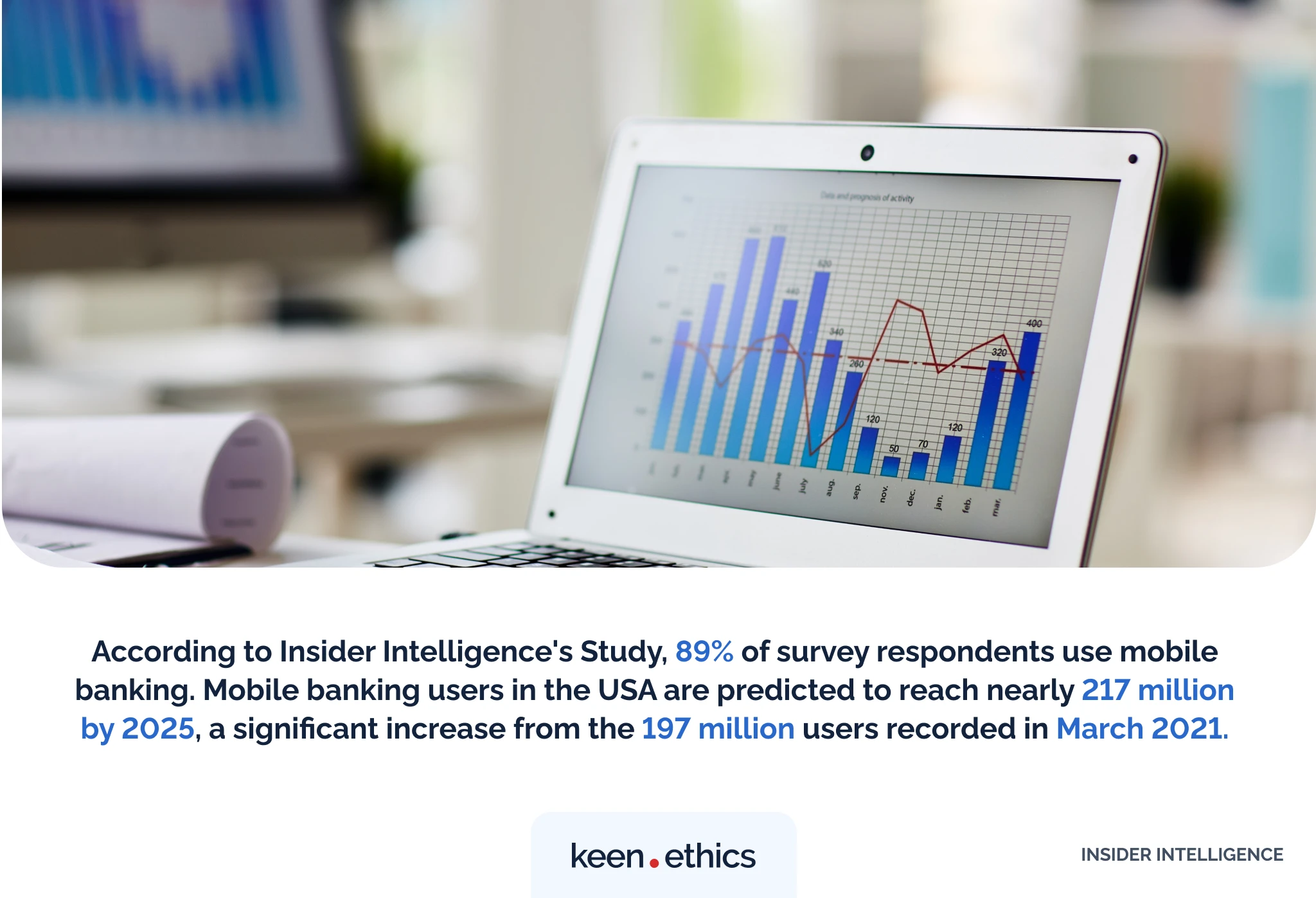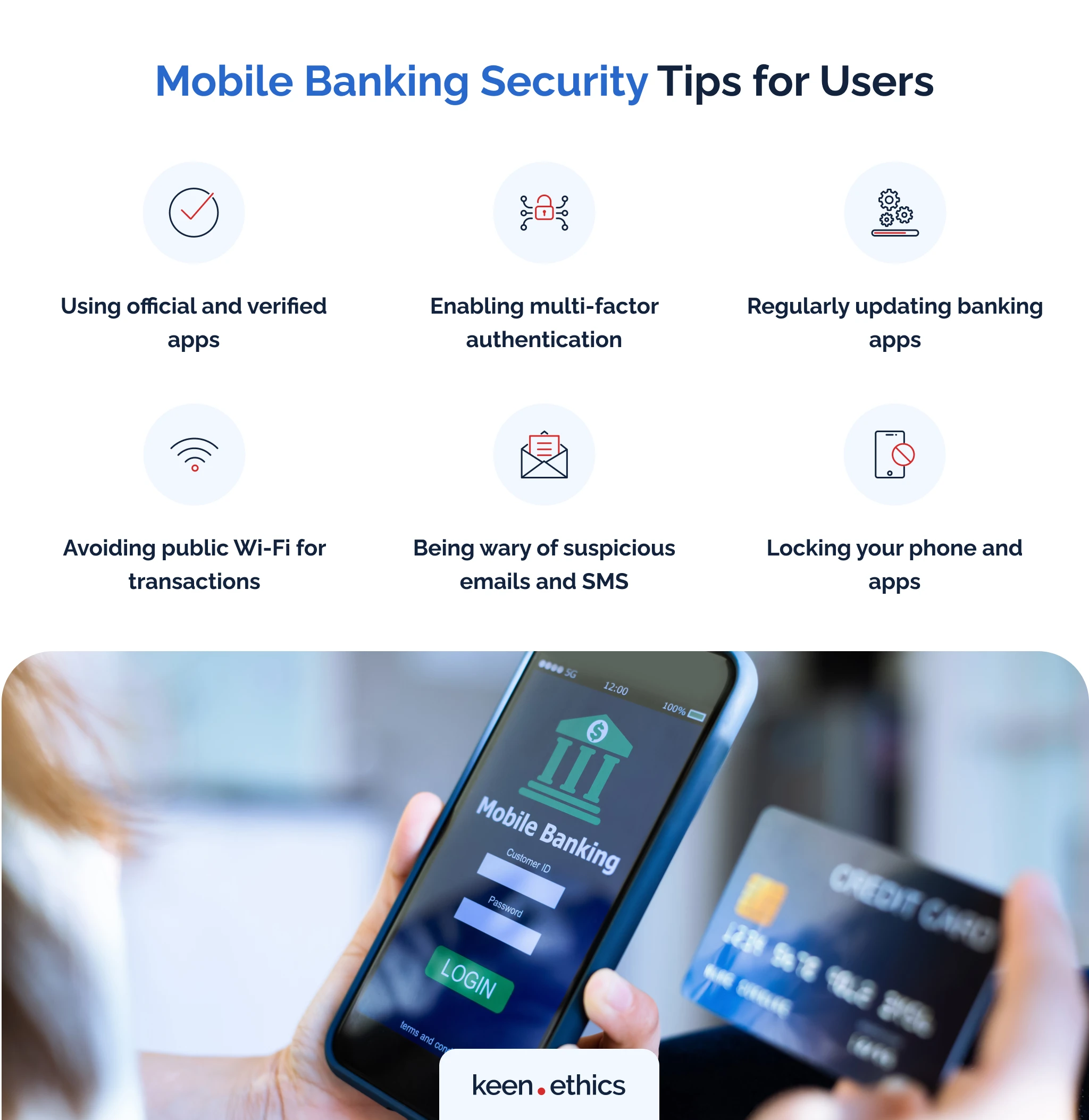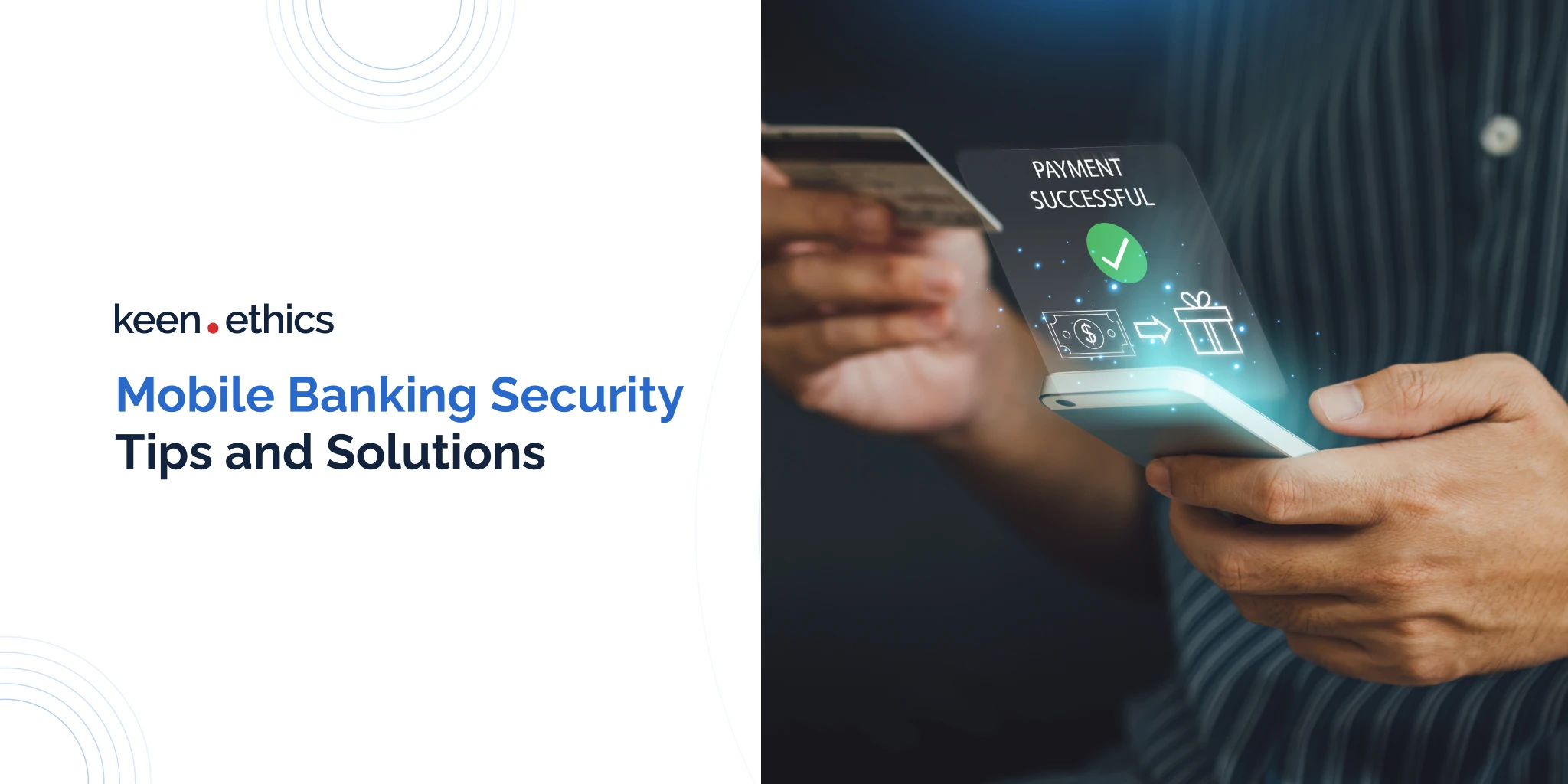Cashless transactions have rapidly changed traditional wallets as mobile banking apps have become the preferred mode of personal financial management. The question is, What fuels this rapid digital shift? Let’s see the pragmatic realm of mobile banking by examining the factors influencing this shift.
Mobile banking is leading in financial transactions, offering impeccable convenience and accessibility to all customers. But with the rapid growth of online services, quality and security assurance are a priority. Banks and users should follow strict recommendations to reduce possible risks. Banks face three main necessities that affect the promotion of banking services. They aim to improve mobile banking security, implement a clear mobile strategy, and meet the increasingly demanding user experience.
In this article, we explore the interaction between banking institutions and clients and the role of technology in enhancing digitalization in the banking sector.
I. The Current Landscape of Mobile Banking Threats
A. Brief overview of mobile banking vulnerabilities
Wallets are a thing of the past, and we see a transformative shift from physical to digital payments. However, despite the wide use of mobile banking, the banking sector isn’t immune to threats.
Today, cybercriminals may pose as legitimate banks to trick users and get confidential data. They make phishing attacks by sending messages with links to fake websites and malicious spyware to compromise clients’ data and intercept transactions. Also, weak or lack of authentication simplifies the way for hackers to breach accounts. Moreover, users’ data may be at risk when transacting through unsecured Wi-Fi networks.
Understanding the potential vulnerabilities is critical for developers and users. Just as developers must implement security measures, users should likewise be knowledgeable about mitigating potential risks.
B. Notable statistics on mobile banking breaches or attacks.
Mobile banking isn’t a trend; it’s a high necessity in a society that is used to digitalization. We’ve compiled the most recent stats to show how the sector advances.
According to Insider Intelligence’s Study, 89% of survey respondents use mobile banking. Mobile banking users in the USA are predicted to reach nearly 217 million by 2025, a significant increase from the 197 million users recorded in March 2021.

The Federal Reserve Bank of Atlanta provided summary results based on consumer payment choices. The study says US consumers made 39 monthly payments on average by credit card (31%) and debit card (29%). This is the highest level, according to a study in 2016, showing that credit cards gain ground compared to cash or other forms of payment.
However, other studies on mobile banking show the need for better security practices.
The debit card information is being stolen from automated teller machines at the highest risk in 20 years. In 2022, there was a 368% surge in compromised cards compared to 2021, identifying over 161,000 impacted cards, which is almost 5 times more than the previous year. It’s a result of skimming activity affecting nearly 3,000 financial institutions.
PR Newswire reports that although 69% of users worry about mobile banking app security issues, most (79%) still use the platforms monthly because convenience is a driving factor in digital payment. More than half of payment users (54%) report the reasons for using the banking platforms, including efficiency (20%), security (17%), and necessity (8%).
According to a Statista 2022 survey, consumers have different attitudes regarding online payments worldwide. 70% of consumers prefer a payment method that doesn’t share their data with merchants. But while 58% feel uncomfortable entering their financial data online, 62% of respondents acknowledged the inevitable fraud risks when shopping online.
Want to know more about mobile banking security threats and which security measures to implement? All within this article.
II. Understanding the Types of Threats
Attackers may harm the security of mobile banking apps differently, so we suggest paying special attention to the following threats.
Authentication
Often, clients themselves give hackers an easy way to access their accounts. Weak passwords are one of the vulnerabilities; therefore, multi-factor authentication on the bank’s side and biometrics on the client’s side will add an extra level of security.
Phishing attack
Users may get fake emails from a legitimate financial institution and fall for phishing scams. Hackers trick them into sharing sensitive information through suspicious links. Banks, for their part, should warn users about possible attacks and warn clients not to go to fake websites and not to enter personal data.
Malware on mobile devices
Malware is created specifically to breach users’ data through a mobile device. To avoid falling into the trap of similar software, we advise you to protect your device and check the source of a particular program. It happens that a program asks for more seemingly unnecessary access to data; you should not install such programs. Before installing the app, you should check the trading platform and ensure the banking app is official. Updating the operating system and devices reduces the risk of possible exploits.
III. Mobile Banking Security Tips for Users
Despite the convenience of mobile banking, there is a critical need for security. While users enjoy the ease of use, hackers continue to use all kinds of ways to threaten users’ accounts. How can users protect their money and ensure their safety in the mobile banking sector? We compiled steps that allow them to ensure the safety of their money during transactions.

- Using official and verified apps
Avoid third-party sites and platforms since they lack security standards. Although Google Play and App Store are reliable stores, the safest place to download the official app is still the bank’s official website.
- Enabling multi-factor authentication
According to the research, the average user may have up to 80 passwords. Even if they remember all of them, the account’s security is questionable. Hackers can easily crack them. So, a more secure way, like two-factor authentication, is essential. With a one-time password sent to your phone or email, hackers can’t break in easily. This method gives cybercriminals a hard time trying to bypass your security.
- Regularly updating banking apps
Regularly updating your devices and apps is a proactive step to maintain security and protect your personal information. You should check when the update is available on your phone and install it immediately. If you don’t update the app on time, the hackers can gain unauthorized access to your device and credentials. Updates often include security patches that fix bugs and vulnerabilities in outdated software. When you update the app, you can make sure it’s safe from viruses, scams, and other cyber threats on the internet.
- Avoiding public Wi-Fi for transactions
The private Wi-Fi is more secure. Hackers can always spy on your activity and steal your banking credentials or money. Using the public network for financial transactions is the same as sharing your info with everyone on that network. Public Wi-Fi lacks proper security measures. When you connect to the network, your financial activity becomes vulnerable to cybercriminals. This way, always conduct banking transactions through home Wi-Fi or mobile data.
- Being wary of suspicious emails and SMS
You may have experienced scamming when the messages in your inbox seem real, but they’ren’t. Remember, the scammers update their tactics to involve as many users as possible. This way, keep a cool mind to identify phishing attempts and report suspicious activity. You can get a message asking you to click a link or open an attachment. Or you can get a message about suspicious activity in your system or account. Spam can report the need to update the payment details in your app. Another spam message can be sent from a fake company you may know, asking you to confirm some personal or financial information. What should you do in these cases? Protect your data using security software or back the data up on your laptop, an external hard drive, or the cloud.
- Locking your phone and apps
Locking your phone and setting strong passwords can safeguard your device and banking account from third parties. When creating the password, try not to use one similar to other accounts or logins. Your password should be unique and secure for each account, especially the one regarding your finances. Also, if you doubt the reliability of your password, try to change it immediately, but don’t reuse the old one. Regular monitoring of your transaction history helps you detect unfamiliar or suspicious activity.
IV. Advanced Solutions to Enhance Mobile Banking Security for Financial Institutions
When developing a mobile banking app, the developers should prioritize not only functional requirements but also the security specifications of the future system. The more thoroughly banks review the security aspects of their banking apps, the lower the likelihood of easy access for hacks and bugs.
Regulation compliance
Regulation compliance is among the main mobile banking security concerns. It’s a must-practice allowing banks to promote open banking and enhance collaboration between clients and businesses. PSD2 is the European regulation that regulates mobile banking services in the EU. It was adopted due to the high rise of digitalization in the financial sector and aimed to reduce the risk of fraudulent transactions by mandating strong customer authentication for payments. The regulations include clear guidelines on unauthorized payments and offer better transparency in banking services. To maintain customer retention and loyalty, the bank should adhere to these regulations to protect customer rights.
End-to-end encryption
It’s challenging to safeguard the data when it’s transferred between systems and devices. With end-to-end encryption, only the sender and recipient have a key to decipher the data. And without this key, the data isn’t accessible to third parties.
Device binding
Device binding is a robust security practice that allows banks to monitor suspicious activity on a user’s device. When a user links their device to their banking service, it helps the bank identify the device in use. This way, the bank can promptly notify the clients of any unexpected login attempts from an unknown device. This instant alert empowers clients to approve or deny such activity swiftly, protecting their sensitive information and finances.
AI and machine learning for fraud detection
AI and machine learning can significantly help banks detect fraud in various ways. Through pattern recognition, AI algorithms learn the user’s behavior and define normal activities for each user, indicating unusual behavior. Unusual large transfers, account logins, or user locations are some deviations that can predict fraudulent behavior.
V. The Role of Banks in Ensuring Mobile Banking Security
Implementing effective defensive tactics is of importance to banks. Let’s briefly examine the main practices that will help protect customer data and business assets.
- Monitoring tools help reduce risks from third parties. By investing in digital services software, banks receive real-time alerts and can control the damage in case of a breach.
- Regularly assessing all security risks of mobile banking can help banks detect threats early and adapt to emerging security concerns. By being well-informed about potential vulnerabilities, teams can strengthen their weaknesses and develop robust incident response plans.
- Banks must implement and manage different levels of access. For customers, this could mean two-factor authentication or fingerprinting to ensure their accounts are protected. For employees and cybersecurity teams, it’s important to monitor who logs in and out of the system based on certain algorithms and rules.
VI. The Future of Mobile Banking Security
Mobile banking apps are no longer just a means of checking your account balance. It’s a comprehensive financial management tool. We have easy access to our accounts, and all financial information is at our fingertips. In the future, there will be rapid progress in technology, especially in using artificial intelligence.
Let’s briefly explore the anticipated changes in the banking sector:
Improved personalization
As mentioned above, based on machine learning algorithms, banks can learn better to understand user behavior, spending patterns, and preferences and offer a more relevant experience.
Integration of banking services
Banks don’t need to offer separate platforms for services such as insurance or cryptocurrency wallets. These solutions can be combined into one comprehensive financial tool, a mobile banking app.
Improved user protection
Transaction security will become a top priority for banks. The world is moving forward, and the main goal for financial institutions is to attract more clients and offer them a more attractive offer than their competitors.
24/7 customer support
Statistics show that artificial intelligence-based virtual assistants like chatbots will become the main assistants for banks. They can handle various requests, from checking account balances to helping with complex financial matters.
Key takeaway: Predictive analytics and adaptive security measures
While we can’t precisely foresee the future of the banking sector in the next decade, there’s one aspect we can certainly acknowledge. Mobile banking is already much more revolutionized than it was ten years ago. Today, clients are more confident in the security of the banking system and its services. As banking gains momentum, it’s worth using the latest technologies to ensure data security and avoid potential risks for clients and banks. Encryption protocols such as two-factor authentication, device binding, and artificial intelligence algorithms will help banks more accurately detect fraudulent activity and notify their customers about it. Just as importantly, financial app developers should keep an eye on regulatory changes to ensure that banks adhere to the regulations of governing bodies.
Conclusion
As technology advances, the collaborative commitment between users and banking institutions remains pivotal in ensuring a safe and secure mobile banking experience. Users and banks can protect the banking sector against evolving threats only by adopting robust strategies and continuously improving security infrastructure. The proactive measures outlined in the article underscore the significance of prioritizing safety in mobile banking. At Keenethics, we pay special attention to the code quality and integrity of mobile apps. We encourage our clients to implement these security tips to safeguard their finances and contribute to a collective effort to reinforce the integrity of mobile banking systems.
With our expertise in web development, we’re dedicated to streamlining your app’s security. Let’s collaborate to create robust mobile banking security solutions prioritizing safety without compromising functionality. Contact us today and let our specialists safeguard your app while empowering your users with mobile banking.












